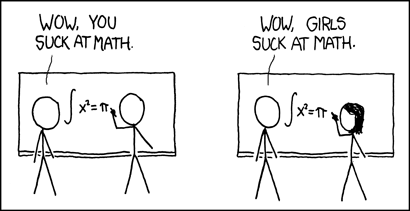Tag archives: out and about
Mary Somerville to appear on new Scottish banknote
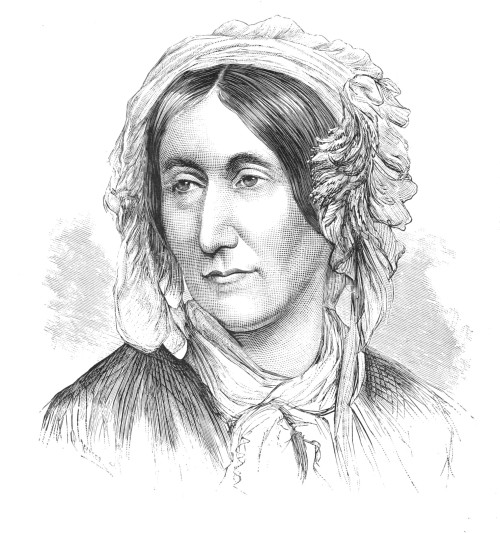
Mary Somerville lived to the age of 91.
By James Dacey
Alice Prochaska, the principal of Somerville College, Oxford, told me yesterday that she is “absolutely thrilled” that Mary Somerville (1780–1872) will appear on a new £10 Scottish banknote. Prochaska believes the decision will help to give the Scottish polymath, whose work led to the discovery of Neptune, the wide recognition she has not yet received. Somerville will be the first woman other than a royal to appear on a Scottish banknote.
The decision had been announced earlier this week by the Royal Bank of Scotland (RBS), following a somewhat bungled public vote. On 1 February, RBS launched a week-long Facebook poll to determine whether Somerville, the engineer Thomas Telford or the physicist James Clerk Maxwell should adorn the new note, which will be issued in the second half of 2017. Having led comfortably throughout, Somerville was overtaken at the eleventh hour by Telford, following a suspicious flurry of votes mainly from outside of the UK. This triggered a three-day stewards’ inquiry before the bank declared Somerville the winner on Wednesday.
View all posts by this author | View this author's profile
Science that goes ‘chirp’ in the night
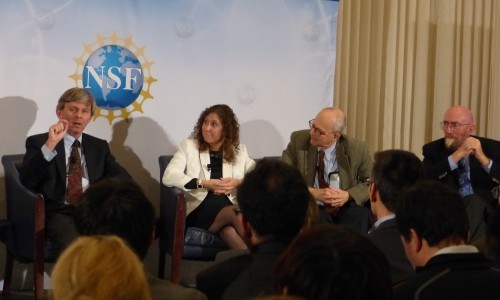
LIGO leaders at the press conference (from left): executive director David Reitze, spokesperson Gabriela González, Rai Weiss and Kip Thorne.
By Margaret Harris at the AAAS meeting in Washington DC
Not with a bang, but a chirp.
That’s how the 2016 meeting of the American Association for the Advancement of Science (AAAS) kicked off on Thursday, thanks to the spectacular news that the Laser Interferometer Gravitational-wave Observatory (LIGO) has, for the first time ever, directly observed the ripples in space–time known as gravitational waves. As our news story explains, LIGO’s twin interferometers picked up the waveform produced as two black holes spiralled into each other, emitting gravitational waves at frequencies and amplitudes that rose sharply with time, like the chirp of a cricket.
The LIGO researchers announced their discovery at a packed press conference in downtown Washington, DC. The excitement in the room was palpable, even though, as it turned out, most of the journalists present already knew what they were about to hear. This actually isn’t unusual. It’s common practice for scientific journals to send new research papers to journalists a few days ahead of publication; the idea behind this so-called embargo system is that it gives journalists time to report accurately on complex science stories.
What was unusual was that this time, there was no embargoed paper. Instead, there was a vigorous rumour mill casting out information in a messy, somewhat underhand and highly anisotropic way. This is rather interesting, and I wish that LIGO’s Gabriela González hadn’t dismissed the journalist who asked about it with an incredulous “The facts are so beautiful – why do you talk about rumours?”
More data needed on the STEM ‘shortage’

(Courtesy: iStock/geopaul)
By Margaret Harris
“Science has always been the Cinderella amongst the subjects taught in schools…not for the first time our educational conscience has been stung by the thought that we are as a nation neglecting science.”
Sounds like something David Cameron or Barack Obama might have said last week, right? Wrong. In fact, it comes from a report by the grandly named Committee to Enquire into the Position of Natural Sciences in the Educational System of Great Britain, which presented its findings clear back in…1918.
I came across this quotation thanks to Emma Smith and Patrick White, a pair of education researchers at the University of Leicester who have spent the past few years studying the long-term career paths of people with degrees in science, technology, engineering and mathematics (STEM). Smith and White presented the preliminary findings of their study at a seminar in Leicester yesterday, and one of the themes of their presentation – reflected in the above quote – was the longevity of concerns about a shortage of STEM-trained people, especially university graduates. As Smith pointed out, worries about the number and quality of STEM graduates are not new and, historically, reports of a “STEM crisis” have been as much about politics as they have economic supply and demand.
View all posts by this author | View this author's profile
Leaping across the innovation divide
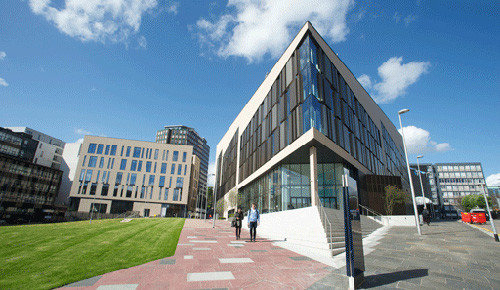
Glasgow’s Technology and Innovation Centre. (Courtesy: University of Strathclyde)
By Margaret Harris in Glasgow
If you’re the first speaker after lunch at a conference, how do you make sure your audience stays awake and engaged?
For Oliver Ambacher – who occupied the dreaded post-prandial slot during Wednesday’s applied photonics conference at Glasgow’s Technology and Innovation Centre (TIC) – the answer is simple. You pretend to jump off a cliff.
Ambacher, the director of the Fraunhofer Institute for Applied Solid State Physics in Freiburg, Germany, made his leap (actually, several leaps of varying lengths) to illustrate one of the toughest challenges in applied physics: the yawning gap between what academic researchers can provide, and what industry scientists need to turn that research into innovative products. This gap is sometimes called the “valley of death”, and Ambacher’s point was that the risks of leaping across it are generally higher on the industry side. “If I, whose heart is still in physics, jump into the valley of death, I lose funding, maybe a project,” Ambacher explained. “But somebody from industry, they may lose their job. So they cannot jump so far.”
View all posts by this author | View this author's profile
Horsing around with some innovative physics

(Left to right) Physicists Giedre Podolyak, Steve Roberts and Snezhana Chater of Hallmarq Veterinary Imaging celebrate their success in the IOP Innovation Awards.
By Margaret Harris
Imagine you’re a veterinarian and a trainer asks you to take a look at a horse. The animal, a champion showjumper, is limping slightly but there is no obvious injury. Exploratory surgery would probably do more harm than good, and the alternative – magnetic resonance imaging (MRI) – isn’t risk-free either. You’d need to put the horse under a general anaesthetic, and you know horses don’t react well to that; in fact, around 0.5% suffer serious injuries while coming round afterwards. And that’s assuming you can even find a scanner big enough to fit a horse. What do you do?
This might sound like a fairly niche dilemma, but for Hallmarq Veterinary Imaging it has become the basis for a thriving business – a business, moreover, that has just won an IOP Innovation Award for the successful application of physics in a commercial product.
At the awards ceremony – which took place last night in the Palace of Westminster, London, just down the hall from the House of Commons chamber – I caught up with Hallmarq’s operations and technical director, Steve Roberts. After sketching out the scenario of the veterinarian and the injured horse, Roberts, a physicist, explained that Hallmarq’s MRI scanner fits around the horse’s leg. This means that equine patients can simply be led into it, sedated but conscious. Sophisticated error-correction and image-processing software helps the scanner compensate for the horse’s movement, and in 15 years of operation, Roberts estimates that veterinarians have used Hallmarq’s machines to scan more than 60,000 horses.
Maxwell’s Torch arrives in Birmingham to mark International Year of Light

Bright affair – Julia King (right) and other dignitaries grasp Maxwell’s Torch at the opening of Lightfest at the Library of Birmingham in the UK. (Courtesy: James Dacey)
By Matin Durrani
Light was the theme in the UK’s second city last Friday when I and my colleague James Dacey attended Lightfest at the Library of Birmingham. Organized by Aston University and funded by the European Commission, the festival was a celebration of light in science, art, technology and culture during the International Year of Light (IYL2015).
Settling scientific disputes in public
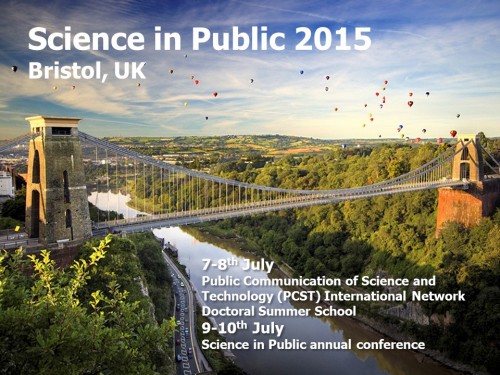
By Margaret Harris
Here’s a Tuesday quiz for you. If you disagree with a colleague about something scientific, what should you do? Your choices are:
(a) Nothing. This is science, and the truth will win out no matter what I do;
(b) Take them aside and explain, privately, why you think they are wrong. Then, if they still disagree with you, get even by writing snarky anonymous reviews of their papers;
(c) Organize a panel “discussion” and tear them to shreds in front of all your colleagues;
(d) Take your case to the public by writing a popular-science book explaining the superiority of your own theory.
Okay, this is a trick question: I’m not sure any of those options is really a good idea (although I’m sure they’ve all been tried). I’d like to focus on the last one, though, because it was the subject of an interesting talk at the Science in Public conference, held last week in Physics World’s home city of Bristol.
View all posts by this author | View this author's profile
Converging streams, secret science and more
By Tushna Commissariat
Regular readers will know that Physics World‘s Hamish Johnston and Louise Mayor will be attending the “Convergence” conference at the Perimeter Institute in Canada from tomorrow onwards. While the conference will undoubtedly prove exciting – just look at this list of speakers – it looks like the institute already has convergence on its mind as this month’s Slice of PI contemplates the “converging streams” of art and science. The video above features Perimeter researcher and artist Alioscia Hamma, who finds solace and symmetry in both his art and physics. Watch the video and read more about his work on the Perimeter blog.
View all posts by this author | View this author's profile
Success, failure and women in physics
By Margaret Harris
Giving out science careers advice is tricky. On the one hand, you want to be encouraging – not least because if you aren’t, there is a chance that your advisee will go on to win a Nobel prize, and you will then look extremely silly. But on the other hand, you also want to prepare the person, mentally, for the possibility of failure. Otherwise, when they do fall short, they may not know how to recover and try again.
The need for balance between encouraging big dreams and preparing for failure was one of the central insights to come out of Sunday’s panel on “Feminism, sexism and bringing up girls” at the Cheltenham Science Festival. After one of the panel members, psychologist Tanya Byron, noted that in clinical practice she sees many bright, successful girls whose fear of failure is “absolutely destroying them”, her fellow panellist Gabriel Weston put her finger on the heart of the problem. How, Weston asked, do we celebrate young women’s achievements and encourage their dreams without also pushing them to be “perfect little glass statues” who shatter under pressure?
View all posts by this author | View this author's profile
A sight for blind eyes
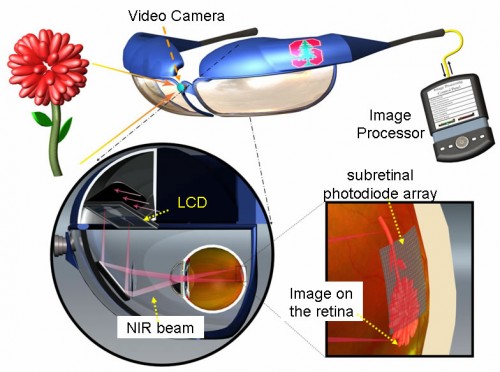
A schematic of the prosthetic vision system developed by Daniel Palanker. (Courtesy: Daniel Palanker)
By Margaret Harris at the AAAS meeting in San Jose
“Restoration of sight to the blind” is a brave claim, one with an almost Biblical ring to it. For Daniel Palanker, though, it is beginning to look as if it is an achievable goal. A medical physicist at the University of Stanford, Palanker has developed a prosthetic vision system that replaces damaged photoreceptors in the retina with an array of tiny photodiodes. When infrared images are projected onto this array, the photodiodes convert the light pulses into electrical signals, which are then picked up by the neurons behind the retina and transmitted to the brain. The result is an artificially induced visual response that, while not as good as normal vision, could nevertheless provide “highly functional restoration of sight” to people with conditions such as retinitis pigmentosa or age-related macular degeneration (AMD).
